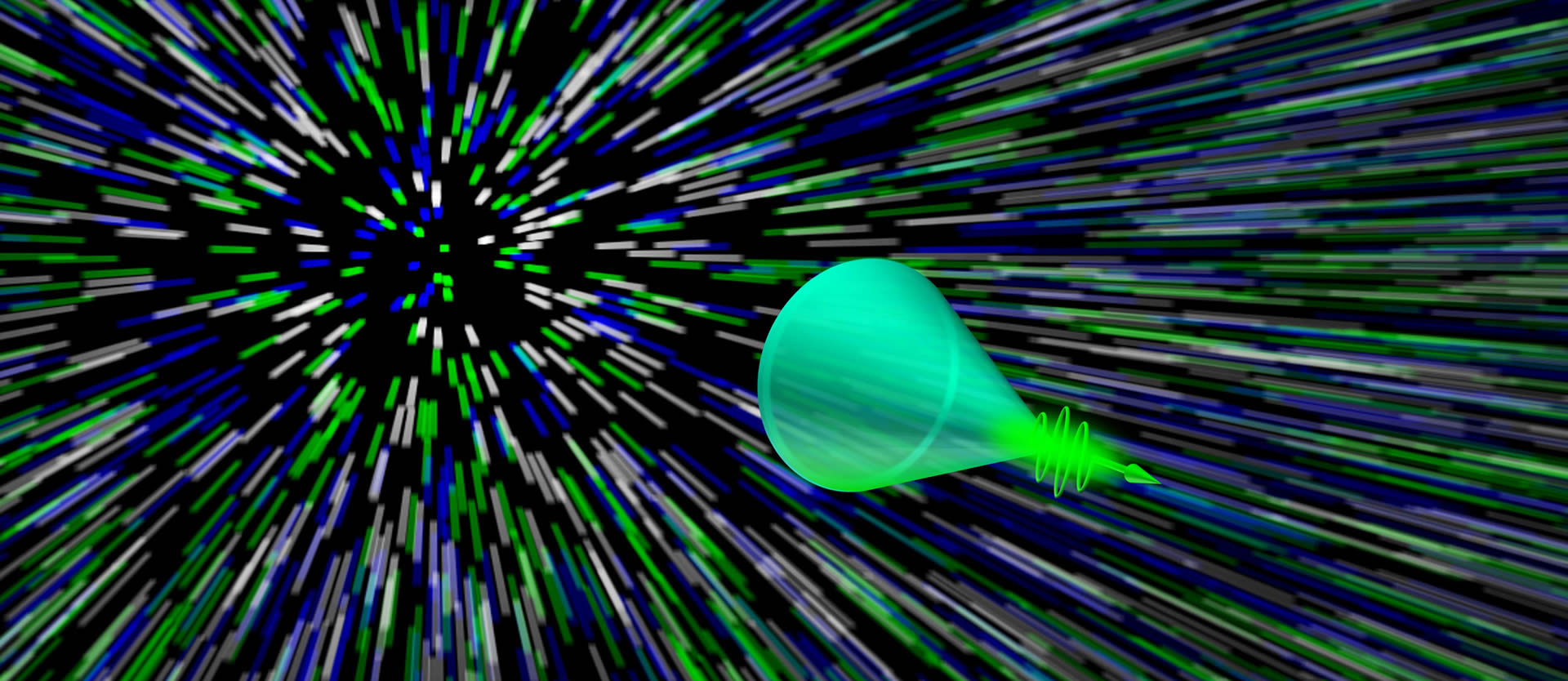Imaging of the photonic analogue of a sonic boom

Nothing can move faster than light. Light travels through a vacuum at a speed of just under 300,000 km/sec. So the idea that one might be able to photograph light quanta in motion sounds next to impossible. But physicists have been doing so now for more than two decades, with the help of techniques for generating ultrashort flashes of light.
In order to “freeze” photons in motion, one needs to build a camera with an extremely short exposure times. Specifically, “the exposure time must be on the order of picoseconds,” as first author Jinyang Liang of Washington University in St. Louis explains. One picosecond is equivalent to one millionth of a millionth of a second.
Liang and his colleagues have now succeeded in perfecting such an instrument. Their system can record events at a rate of 100 billion frames per second, and the videos they have made with it reveal a phenomenon that has eluded detection until now: The researchers have, for the first time, photographed -- in real time -- the “photonic Mach cone”, i.e. the shock wave generated by the interaction between the advancing front of a light pulse and the medium through which it is moving. The findings appear in the journal “Science Advances” (2017; doi: 10.1126/sciadv.1601814).
Mach cones are generated when an object is travelling through a medium faster than the speed of propagation of the waves that it generates. A simple example is the bow wave produced by a speedboat travelling faster than the oncoming water waves. Similarly, when an aircraft exceeds the speed of sound, the pressure waves it creates become restricted to a cone-shaped region extending backward from the nose. When the trailing front of this cone reaches the ground, the sudden change in pressure is perceived as a sonic boom.
© Jinyang Liang, Cheng Ma, Liren Zhu, Yujia Chen, Liang Gao and Lihong V. Wang, Science Advances 3, e1601814 (2017)
The video produced by the researchers at Washington University shows that the same phenomenon can be observed with a propagating pulse of light. The film was assembled from single frames taken by a newly developed “lossless-encoding compressed ultrafast camera (LLE-CUP). The camera is made up of an arrangement of lenses, mirrors and beam splitters, and it not only registers the instantaneous scattering pattern, it also spatially encodes the data prior to imaging, using complex algorithms that extract further details of the time-course of the event.
In the experiments, laser pulses were directed through a channel whose refractive index is lower than that of the material in which it is encased. Thus, when a pulse of green light, lasting 7 ps, is introduced into the channel, it propagates faster than the scattered light in the channel wall. “And at a certain point, the distribution of scattered light takes on the form of a Mach cone,” Liang explains, “and that is what we were able to photograph.“
The researchers believe that the new technology will find use in biomedical imaging, and could be used to capture the dynamics of three-dimensional structures in biological systems in living organisms.










